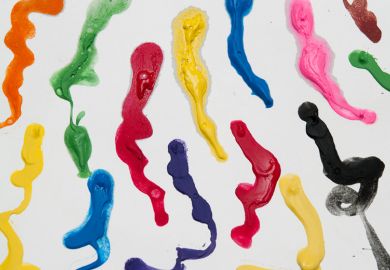“We keep begging as a society for more innovators,” said Anthony Brandt, professor of composition and music theory at Rice University in Texas. “But we seem to be moving in the wrong direction in training them.”
Professor Brandt was in London with David Eagleman, a neuroscientist and entrepreneur who teaches at Stanford University, for the publication of their new book, The Runaway Species: How Human Creativity Remakes the World. This sets out, explained the latter, to “understand why we are the only species which does things which are creative – what it is about the human brain which differentiates it in this massive way”.
“The human brain takes an input, mashes it up and puts out new versions,” continued Dr Eagleman. The question is, he continued, “how can we refine our educational systems to cultivate this property of human brains?”
Their suggestions draw on the experiences of both authors. “When I went to university,” recalled Dr Eagleman, “I studied electrical engineering and physics and I found the classes so boring, because all we were doing was trying to get to the answer in the back of the book. All the magic of those fields was gone, so I ended up majoring in British and American literature and only later went back into science and rediscovered those fields from different angles.”
Professor Brandt is a composer as well as an academic in what he described as a “modern classical” style, which means that he is still inspired by Beethoven and Bartók but uses them as a basis to create something of his own.
“All creativity emerges from prior experience,” he told Times Higher Education. “The richer your storehouse of raw materials, the more abundant your ability to make new combinations.”
Courses in engineering could also, as Dr Eagleman put it, “teach the stuff you need and then ask students to come up with seven different ways to build a blender or an aeroplane wing – not just think of the answer that is at the back of the book”.
So what does all this mean for universities in practice?
The Runaway Species includes the example of Building 20 at the Massachusetts Institute of Technology, a temporary post-war “plywood palace” where “nuclear physicists worked near food researchers” and “Noam Chomsky developed his pioneering theories about human language”. It also describes a project at Rice University where undergraduates looked at ways of developing a cheap intravenous drip for hospitals in poor countries where the electricity supply is unreliable and “babies run the risk of lethal over-hydration”. The initial solution made ingenious use of a mousetrap; a modified version proved highly successful during trials in Malawi.
Asked about further examples of creativity training in universities, Professor Brandt pointed to a course at Rice called Monsters, which brings together “someone from Romance languages, who teaches monsters in literature, and someone from biology, who teaches monstrous creatures [such as deep-sea fish]. One of the final projects is that the students all have to create their own monster and photograph themselves in costume.”
He said: “Being able to walk into a university class and see this diversity of output, with everybody having mastered the same material and then extrapolated from it in different ways – that would feel as if the joint was really humming.”
Register to continue
Why register?
- Registration is free and only takes a moment
- Once registered, you can read 3 articles a month
- Sign up for our newsletter
Subscribe
Or subscribe for unlimited access to:
- Unlimited access to news, views, insights & reviews
- Digital editions
- Digital access to THE’s university and college rankings analysis
Already registered or a current subscriber?








